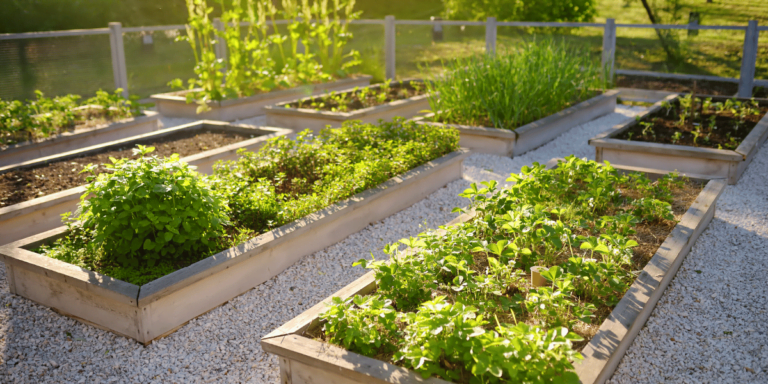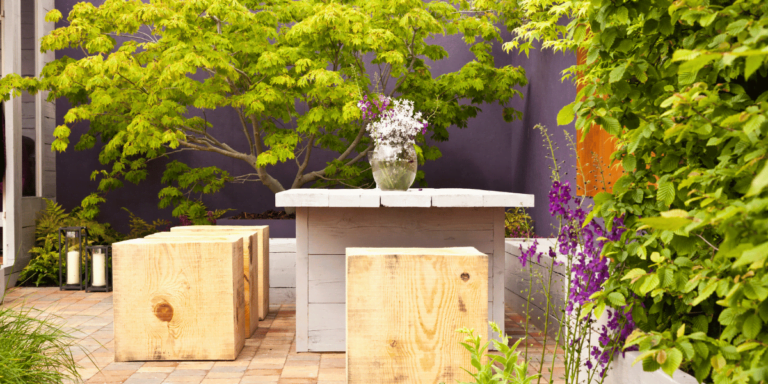As we approach 2024, vegetable garden planning is more important than ever for a successful and bountiful harvest. In this comprehensive guide, we will explore the process of online garden planning, including assessing garden space, designing layouts, choosing planning methods, prioritizing crops, and incorporating sustainable practices. By following these tips and tricks, you can create a thriving and eco-friendly oasis right at your fingertips.
Key Takeaways:
- Assess your garden space before starting the planning process.
- Consider the benefits of raised beds and observe sunlight patterns.
- Incorporate clear paths and choose suitable path materials for easy access.
- Select a planning method that works best for you, whether it’s paper and pencil, spreadsheets, or online garden planner tools.
- Prioritize warm-season crops and implement wind protection strategies for optimal growth.
Assess Your Garden Space
Before starting your online garden planning, it’s crucial to assess your garden space. This initial step will help lay the foundation for a successful garden. By considering the benefits of raised beds and observing sunlight patterns, you can optimize your garden layout and create optimal growing conditions for your plants.
Benefits of Raised Beds:
- Better soil quality
- Easier weed control
- Pest prevention
- Reduced risk of frost damage
Observing Sunlight Patterns:
By observing sunlight patterns in your garden area, you can determine the best locations for planting sun-loving crops. Ensure that the plants requiring ample sunlight are positioned in areas that receive the most direct sunlight throughout the day. This step is essential for optimizing growth and ensuring a bountiful harvest.
To illustrate the benefits of raised beds and the importance of observing sunlight patterns, take a look at the following table:
| Raised Bed Benefits | Observing Sunlight Patterns |
|---|---|
| Better soil quality | Determine best planting locations |
| Easier weed control | Optimize sunlight exposure |
| Pest prevention | Maximize plant growth |
| Reduced risk of frost damage | Ensure a bountiful harvest |
By incorporating raised beds and strategically planning your garden based on sunlight patterns, you can create an ideal environment for your plants to thrive. The image below showcases a beautifully organized garden with raised beds and strategically positioned crops:
Design Layout with Clear Paths
When it comes to designing your garden layout, incorporating clear paths is essential for preventing soil compaction and ensuring easy navigation. To create a functional and visually appealing garden space, consider the following tips:
Avoid wide beds and prioritize accessibility
- Avoid beds wider than four feet
- Ensures easy access
- Avoid stepping on planting areas
Choose the right path materials
Path materials play a crucial role in both aesthetics and functionality. Consider the following options based on personal preferences and practical considerations:
| Path Materials | Key Benefits |
|---|---|
| Grass | Easily accessible and visually pleasing |
| Paving stones | Durable and long-lasting |
| Wood chip mulch | Provides natural traction and moisture retention |
By incorporating clear paths and selecting suitable path materials, you can ensure easy navigation and enhance the overall visual appeal of your garden space. Now let’s move on to the next section to discover the importance of choosing the right planning method for your online garden planning journey.
Choose a Planning Method
Selecting the right planning method is crucial for successful online garden planning. Whether you prefer the traditional approach or the convenience of digital tools, there are various options to suit your needs. Consider the following planning methods:
1. Paper & Pencil Planning
If you enjoy the tactile experience of planning on paper, this method offers flexibility and creativity. Sketching out your garden layout allows you to visualize the space and make adjustments easily. While it may be less precise compared to digital tools, paper and pencil planning can be a great starting point for your online garden plan. Just grab graph paper, a pencil, and your imagination!
2. Spreadsheet-based Plans
If you prefer structure and precision, using spreadsheet software like Excel or Google Sheets can help you create detailed and organized garden plans. By utilizing rows and columns, you can easily arrange and track plant varieties, quantities, spacing, and other important details. Spreadsheet-based plans also allow you to calculate planting dates, track expenses, and make adjustments as needed.
3. Online Garden Planner Tools
Specialized online garden planning tools offer convenience and additional features to streamline your garden planning process. These tools provide drag-and-drop functionality, extensive plant databases, and customizable layouts. Here are some popular online garden planner tools:
| Garden Planner Tool | Features |
|---|---|
| GrowVeg | – Customizable layouts – Extensive plant database – Crop rotation suggestions – Seasonal planting reminders |
| Smart Gardener | – Personalized garden plans – Planting schedules – Watering and care reminders – Crop rotation guidance |
| Mother Earth News Vegetable Garden Planner | – Interactive garden planner – Planting guides – Seed starting tips – Harvest estimations |
These tools not only simplify the planning process but also provide valuable insights and guidance to maximize your gardening success.
No matter which planning method you choose, the key is to find a approach that works best for you. Now that you have explored different planning methods, it’s time to dive deeper into the next section, where we will discuss prioritizing warm-season crops for optimal growth and yield.
Prioritize Warm Season Crops
When planning your garden, it’s important to prioritize sun-loving vegetables that thrive in warm weather conditions. By focusing on crops like tomatoes, peppers, eggplants, cucumbers, and zucchini, you can ensure a bountiful harvest. These plants require plenty of sunshine, so it’s essential to position them in prime spots within your garden area.
To create optimal growing conditions for your sun-loving vegetables, it’s crucial to implement effective wind protection strategies. Harsh winds can damage delicate plants and inhibit their growth. Consider the following wind protection options:
- 1. Fences: Install sturdy, weather-resistant fences around your garden beds to shield sun-loving plants from strong winds.
- 2. Hedges: Use dense, fast-growing hedges as natural windbreaks to protect your crops.
- 3. Row Covers: Cover your plants with lightweight row covers to provide an additional barrier against wind damage while still allowing sunlight and airflow.
- 4. Homemade Screens: Create your own custom wind screens using materials like mesh fabric or burlap to reduce the impact of strong winds.
By incorporating wind protection strategies, you can safeguard your sun-loving vegetables and create an environment that promotes optimal growth and development.
Plan Shaded Areas Wisely
When it comes to online garden planning, optimizing light exposure in shaded areas is key. By strategically selecting shade-tolerant vegetables and arranging them behind taller sun-loving varieties, you can ensure that every plant in your garden gets the light it needs to thrive.
Shade-tolerant veggies such as broccoli, kale, and spinach are excellent choices for shaded areas. These resilient plants can grow well even with limited direct sunlight. By placing them behind taller plants, you create a natural shade canopy that optimizes light distribution across different plant heights and types.
Consider positioning taller plants on the north side of your garden beds and shorter plants on the south side. This arrangement maximizes sunlight exposure, as the taller plants won’t overshadow the shorter ones. By incorporating trellises or vertical supports, you can further enhance light exposure and create more planting space.
Remember, the goal is to optimize light exposure for all your plants, so plan your garden layout accordingly. By making wise choices, you can transform shaded areas into productive and thriving parts of your garden.
If you need some inspiration, take a look at the table below for a list of shade-tolerant and sun-loving vegetables:
| Shade-Tolerant Vegetables | Sun-Loving Vegetables |
|---|---|
| Broccoli | Tomatoes |
| Kale | Peppers |
| Spinach | Eggplants |
Group Water-Intensive Crops
When it comes to watering your vegetable garden, implementing efficient irrigation practices is key. One effective strategy is to group water-intensive crops together in your garden plan. This not only conserves water resources but also ensures that each plant receives the necessary hydration for healthy growth and abundant yields.
Water-intensive vegetables such as celery, tomatoes, cucumbers, and squash have higher water requirements compared to other crops. By dedicating specific areas of your garden to these plants, you can tailor your watering efforts accordingly and avoid wasting water on less thirsty varieties.
Here are some benefits of grouping water-intensive crops:
- Improved water conservation: By focusing your watering efforts on designated areas, you can optimize water usage and reduce overall consumption.
- Efficient irrigation management: Grouping water-intensive crops allows you to create a more targeted and efficient watering system, ensuring each plant receives adequate moisture.
- Prevention of overwatering or underwatering: Different crops have varying water needs. By separating water-intensive crops, you can avoid overwatering or underwatering other plants that require less moisture.
By following this approach, you promote sustainable gardening practices while maximizing the health and productivity of your water-intensive vegetables. Let’s take a look at how this grouping strategy can be implemented in a garden layout:
| Grouped Water-Intensive Crops | Location |
|---|---|
| Celery | Southern section of the garden |
| Tomatoes | Western section of the garden |
| Cucumbers | Northern section of the garden |
| Squash | Eastern section of the garden |
By grouping the water-intensive crops in specific sections of your garden, you can easily monitor their water needs, provide targeted irrigation, and ensure their optimal growth and development. This approach not only saves water but also promotes a more sustainable and efficient gardening practice.
Conclusion
Online garden planning is crucial for creating a thriving and sustainable garden. By taking the time to assess your garden space, design clear layouts, choose the right planning method, prioritize crops, and incorporate sustainable practices, you can transform your outdoor space into an eco-friendly oasis. Remember to prioritize convenience and accessibility by incorporating pathways and clear paths, making it easy to navigate and tend to your plants.
As you finalize your garden plan, consider incorporating garden infrastructure such as raised beds and trellises to optimize space and maximize light exposure. By grouping water-intensive crops together, you can create a more efficient watering system and conserve resources. Prioritizing warm-season crops along with shade-tolerant varieties will help you make the most of available sunlight and create optimal growing conditions for each plant.
With these tips and tricks, you’ll be well-equipped to start planning your 2023 vegetable garden. Embrace sustainable practices and enjoy the rewards of a bountiful harvest. Remember, gardening is a continuous learning journey, so don’t be afraid to experiment and adapt your approach. Happy gardening!
Frequently Asked Questions
What are the benefits of raised beds for garden planning?
Raised beds provide better soil quality, easier weed control, pest prevention, and reduced risk of frost damage.
How can I determine the best locations for planting sun-loving crops?
Observe the sunlight patterns in your garden area to identify the spots with the most sun exposure.
How wide should the beds be to ensure easy access?
Avoid beds wider than four feet to ensure easy access and prevent stepping on planting areas.
What path materials should I choose for my garden layout?
You can choose from options like grass, paving stones, or wood chip mulch based on personal preferences and practical considerations.
What planning methods can I use for online garden planning?
You can opt for traditional options like paper and pencil planning, spreadsheet software for more structure and precision, or specialized online garden planners like GrowVeg, Smart Gardener, or the Mother Earth News Vegetable Garden Planner.
Which crops should I prioritize in my garden plan?
Prioritize warm-season crops like tomatoes, peppers, eggplants, cucumbers, and zucchini, which require plenty of sunshine.
How can I protect sun-loving plants from harsh winds?
Implement strategies like fences, hedges, row covers, or homemade screens to shield the sun-loving plants and create optimal growing conditions.
What are some shade-tolerant vegetables I can grow in my garden?
Shade-tolerant vegetables include broccoli, kale, and spinach, which can be positioned behind taller sun-loving varieties to optimize light exposure.
How can I optimize irrigation management in my garden plan?
Group water-intensive crops together in your garden plan to conserve resources and ensure each plant receives adequate hydration.
How can grouping by water needs benefit my garden?
Grouping water-intensive crops together allows for a more efficient watering system and reduces overall water consumption.

















